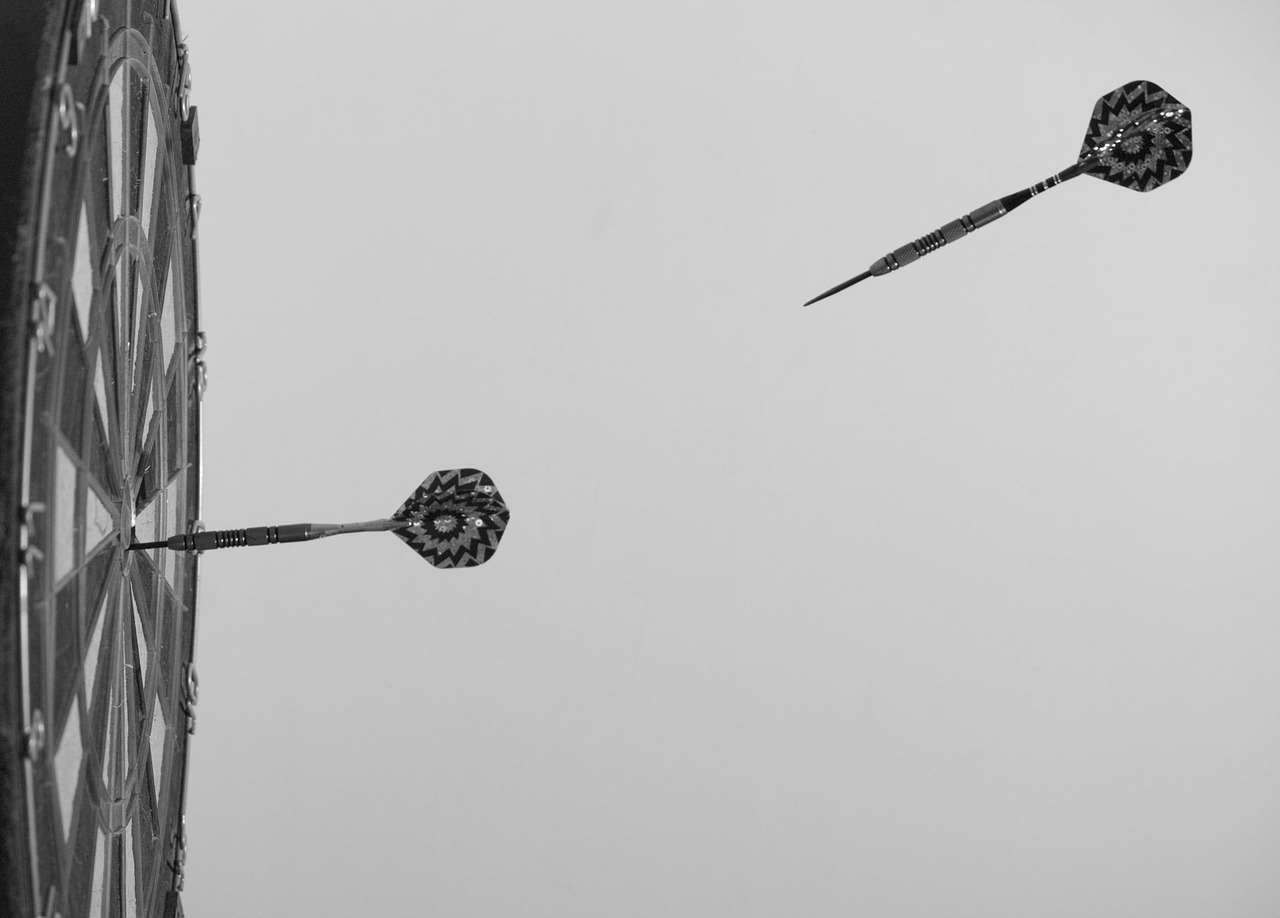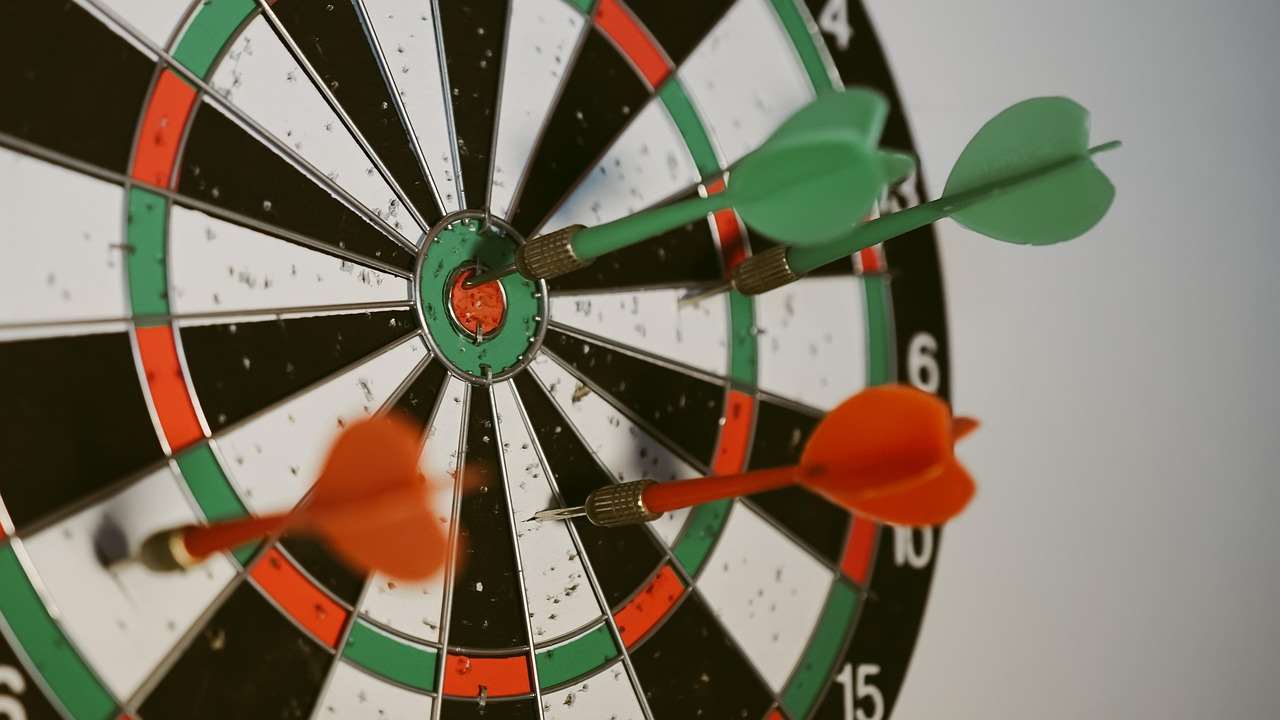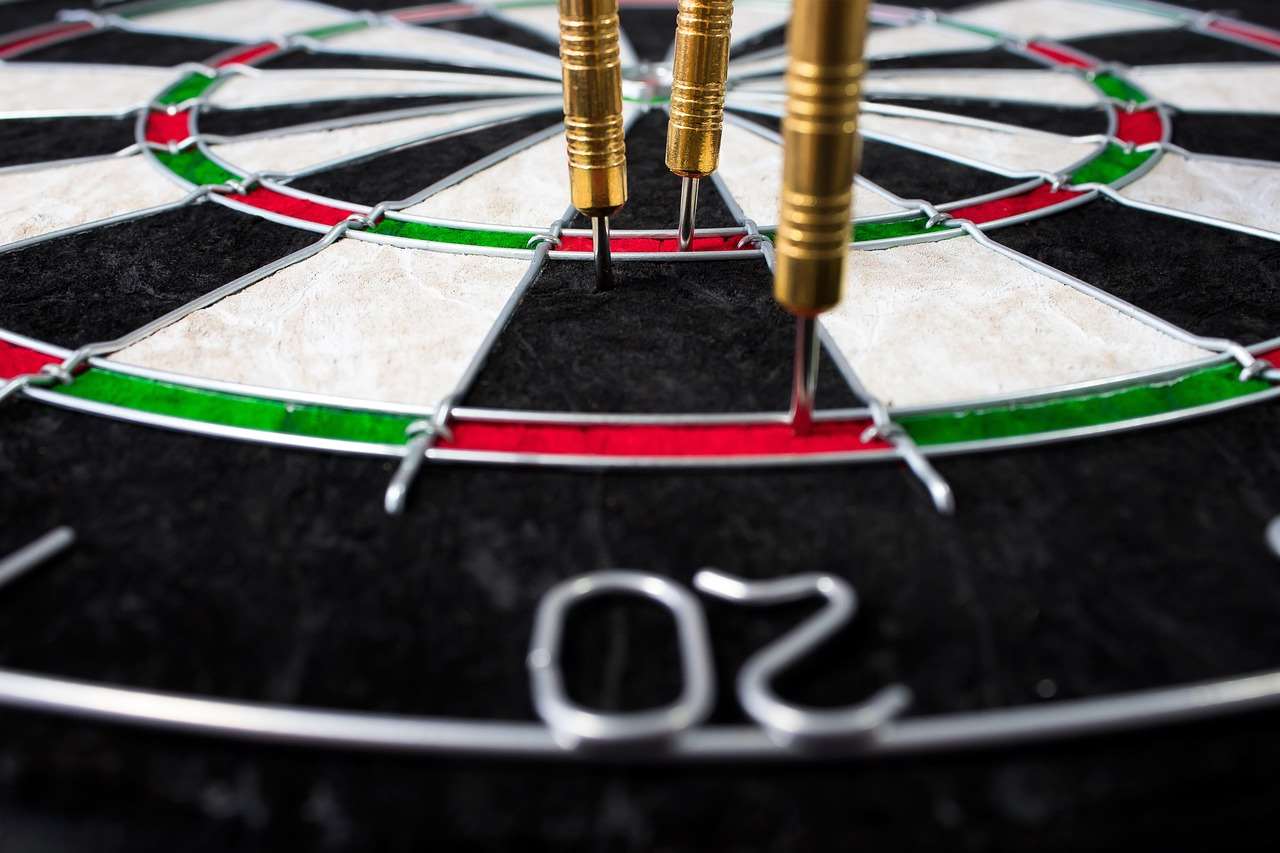Understanding the darts flight shaft system is crucial for improving your dart game. This article will explain the components of this system, how they work together, and how choosing the right combination can significantly impact your accuracy and consistency. We’ll also cover selecting the right shafts and flights for your throwing style and explore common issues players face.
⚠️ Still Using Pen & Paper (or a Chalkboard)?! ⚠️
Step into the future! The Dart Counter App handles all the scoring, suggests checkouts, and tracks your stats automatically. It's easier than you think!
Try the Smart Dart Counter App FREE!Ready for an upgrade? Click above!
The darts flight shaft system, while seemingly simple, is a complex interplay of three key components: the barrel, the shaft, and the flight. Each element contributes to the overall flight path and stability of your dart, directly affecting how accurately and consistently you can hit your target. Understanding this system allows you to fine-tune your setup for optimal performance. Choosing the right combination is a key part of mastering your throw.
Understanding the Darts Flight Shaft System: Components and Function
Let’s break down each element of the darts flight shaft system individually. Firstly, the barrel is where the majority of the dart’s weight resides, and it’s the part you grip. Next, the shaft connects the barrel to the flight, acting as a crucial intermediary element. Finally, the flights are the aerodynamic surfaces at the rear, providing stability and controlling the dart’s trajectory.

The shaft plays a vital, often underestimated, role. Its length and material directly influence the dart’s stability and overall flight characteristics. A longer shaft might be preferred by players with a longer throwing style, whereas a shorter shaft is often chosen for a tighter grouping with a quicker release. The material, typically nylon or aluminum, also affects the weight and flexibility of the dart, contributing to how it behaves in flight.
Shaft Materials and Their Properties
- Nylon Shafts: These are the most common, offering a good balance of flexibility and durability. They’re generally less expensive than aluminum shafts.
- Aluminum Shafts: Known for their rigidity and durability, aluminum shafts are often preferred by professional players who need maximum consistency and control. They can be more prone to bending in extreme situations, however.
Selecting the right shaft length is crucial. Experimentation is key! A properly selected shaft length contributes to a smoother, more consistent flight path. You might find yourself wanting to try different lengths to find your optimum setting. This usually involves testing different dart flight shaft systems until you find the right fit.
The Role of Flights in the Darts Flight Shaft System
The flights are the large, aerodynamic surfaces at the rear of the dart. They are not just for show; they play a significant role in how the dart flies. They provide stability during the dart’s flight, helping it minimize wobble and remain true to its intended path. The flight’s shape and size impact its aerodynamic properties, influencing the dart’s trajectory, speed, and stability. Different flight types are designed for different throwing styles and preferences.

Consider these factors when choosing flights: The shape of the flight affects air resistance, influencing the dart’s speed and flight path. Standard, pear, and kite shapes are common choices, each offering a slightly different aerodynamic profile. Flight material can affect their longevity. Standard plastic flights are widely used and relatively affordable. However, more durable materials like polypropylene, or even the premium, top-tier materials, offer greater longevity and performance but at an increased cost.
Flight Shapes and Their Effects
- Standard Flights: These are the most common shape, offering a good balance of stability and speed.
- Pear Flights: Often used to improve stability and reduce wobble, these flights have a more pronounced point at the bottom. Ideal for longer throws, longer ranges.
- Kite Flights: Designed to increase air resistance and slow the dart down, providing a more controlled and stable flight.
The size of the flight also matters. Larger flights provide increased stability but can slow the dart down. Smaller flights offer less stability but allow for faster throws. This is another area where finding the balance between these things is crucial. A darts flight shaft system can greatly improve your scores by helping you maximize your ability.
Choosing the Right Darts Flight Shaft System for Your Style
Choosing the right darts flight shaft system involves considering your individual throwing style. If you have a powerful throw, you might opt for smaller, lighter flights that permit greater speed and a fast release, while a softer throw might be better suited to larger flights offering greater stability and control. Experimentation is key. Keep a detailed log of your scores and the systems that you test, tracking your outcomes with different setups.
Your grip also influences the choice of shaft. A tighter grip might necessitate a shorter, stiffer shaft, while a looser grip might prefer a longer, more flexible shaft. It’s worth experimenting with both nylon and aluminum shafts to discover which better suits your personal needs. A good dart counter app can help with keeping track during testing.

The weight of the dart is a critical factor. Heavy darts are suitable for powerful throws, requiring less correction during the flight trajectory. Lighter darts require more precision and control but might also enable a quicker release and increased speed. Consider which of these fits your preferences. The appropriate weight needs to be coupled with the correct components of the darts flight shaft system to achieve good performance.
Troubleshooting Common Darts Flight Shaft System Issues
Even with careful selection, you might encounter some common issues. For example, if your darts are consistently veering off course, it could be due to an improperly aligned darts flight shaft system or incorrectly sized flights. Similarly, if your darts are not flying true, then it may be the shape of the flight or even the material of the shaft that is creating this issue. If the darts appear to be unstable during flight, you may want to increase flight size.
Addressing these issues requires systematic troubleshooting. Start by checking the alignment of your components. Ensure that the shafts are securely attached to both the barrels and the flights. If your darts are consistently deviating, try adjusting the length of the shaft or changing the flight shape and size. Keep in mind that each modification will have an effect on your throw, so it’s wise to take meticulous notes of your progress.

Sometimes, the issue isn’t with the darts flight shaft system itself, but with your throwing technique. Inconsistent grip pressure or release angle can lead to inconsistent throws, regardless of how well you’ve fine-tuned your equipment. Professional coaching, recorded video sessions, or practicing with various target sizes can help identify these inconsistencies. By using a digital dart score app, you can also keep track of your scores and identify patterns.
Maintaining Your Darts Flight Shaft System
Proper maintenance is crucial for the longevity and performance of your darts flight shaft system. Regularly inspect your shafts and flights for damage. Replace worn or damaged components promptly to ensure consistent performance. Damaged flights should be replaced immediately, while damaged shafts might be bent slightly, though this depends upon the material of the shaft.
Storing your darts properly is also important. Avoid leaving them in direct sunlight or extreme temperatures, as this can cause warping or damage. Consider purchasing a dedicated darts case or carrying case to keep your darts safe and secure. This will help to ensure that your darts flight shaft system remains in top condition.

Choosing a good darts set is also important. A quality darts set will often include a variety of shafts and flights, so you can experiment and find what works best for you. Even a simple darts stand and board can improve the overall experience. Investing in a high-quality system is a great investment in the game.
Conclusion: Mastering Your Darts Flight Shaft System
Mastering your darts flight shaft system is a journey of experimentation and refinement. By understanding the roles of each component – the barrel, shaft, and flight – you can optimize your setup for improved accuracy and consistency. Remember that there’s no one-size-fits-all solution; the ideal setup depends on your individual throwing style, grip, and preferences. Through careful observation, data recording, and persistent practice, you can achieve a winning combination that boosts your game to the next level. Maximum Darts Canada may offer some good choices for beginners.
So, start experimenting today! Try different shaft lengths and materials, explore various flight shapes and sizes, and keep track of your results. With a little patience and dedication, you’ll be well on your way to achieving greater darting prowess. Don’t forget the power of a good darts setlist to help with practice and tracking performance, or even a darts points board for a more visual tracking method! And if you’re looking for an unusual place to play, check out our guide on how to install a dartboard on the back of a door!
Hi, I’m Dieter, and I created Dartcounter (Dartcounterapp.com). My motivation wasn’t being a darts expert – quite the opposite! When I first started playing, I loved the game but found keeping accurate scores and tracking stats difficult and distracting.
I figured I couldn’t be the only one struggling with this. So, I decided to build a solution: an easy-to-use application that everyone, no matter their experience level, could use to manage scoring effortlessly.
My goal for Dartcounter was simple: let the app handle the numbers – the scoring, the averages, the stats, even checkout suggestions – so players could focus purely on their throw and enjoying the game. It began as a way to solve my own beginner’s problem, and I’m thrilled it has grown into a helpful tool for the wider darts community.